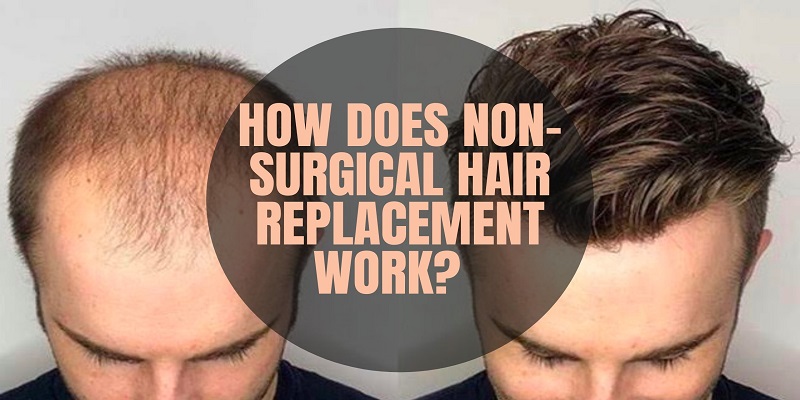Why Most Hair Transplants Fail to Satisfy and the Non Surgical Hair Replacement Solution to Consider
Hair loss can be a distressing experience, prompting many individuals to seek solutions that promise to restore their confidence and appearance. While hair transplants are often touted as the ultimate remedy, the reality is that a significant number of these procedures fail to meet expectations. In this article, we delve into the reasons why hair transplants frequently fall short and introduce a compelling non-surgical alternative worth considering.
Understanding the Common Shortcomings of Hair Transplants
1. Unrealistic Expectations
One of the most common reasons hair transplants fail to satisfy is unrealistic expectations. Many patients enter the process believing it will provide a full head of hair akin to their youth. However, the success of a transplant heavily depends on the availability and quality of the donor hair. Limited donor hair can result in sparse or uneven coverage, leaving patients disappointed.
2. Surgical Complications
Hair transplant procedures, like any surgical intervention, are not without risks. Infections, scarring, and graft rejection are potential complications that can negatively impact results. Poor surgical techniques or unskilled practitioners may also contribute to suboptimal outcomes, including unnatural hairlines and patchy growth.
3. Insufficient Density
Achieving natural-looking density is a significant challenge in hair transplants. Even when performed by skilled surgeons, the transplanted hair may not provide the volume needed to blend seamlessly with existing hair. Sparse or “see-through” coverage is a common complaint among patients.
4. Long Recovery Periods
Hair transplant recovery can be lengthy and uncomfortable. Swelling, redness, and scabbing often persist for weeks, and it can take months before the transplanted hair begins to grow visibly. The prolonged downtime may discourage many from pursuing this option.
5. High Costs with Variable Results
Hair transplants are expensive, with costs often ranging from 50000 or more depending on the extent of the procedure. Unfortunately, the high price does not guarantee satisfactory results, leaving some patients feeling they’ve wasted their money.
The Non-Surgical Solution: Scalp Micropigmentation (SMP)
Given the limitations and risks of hair transplants, many individuals are turning to Scalp Micropigmentation (SMP) as an innovative, non-surgical solution for hair loss. SMP involves the application of medical-grade pigments to the scalp to replicate the appearance of natural hair follicles. Here’s why SMP is gaining widespread popularity:
1. Immediate and Natural Results
Unlike hair transplants, which require months to show results, SMP provides an instant improvement in appearance. The treatment creates the illusion of a closely-shaven scalp or denser hair, blending seamlessly with your existing hair. Skilled SMP practitioners can replicate natural hairlines, making it nearly indistinguishable from real hair.
2. Non-Invasive and Low-Risk
SMP is a non-surgical procedure, meaning there are no incisions, stitches, or risk of infection. The process is relatively pain-free, with most patients describing only mild discomfort. Additionally, there is no downtime, allowing you to return to your daily routine immediately after the session.
3. Cost-Effective Alternative
Compared to hair transplants, SMP is a far more affordable option. The average cost ranges from Rs.5000 to $15000, depending on the extent of the treatment. This makes it accessible to a broader audience without compromising on quality or effectiveness.
4. Suitable for Various Hair Loss Stages
SMP is versatile and suitable for individuals experiencing different degrees of hair loss. Whether you’re dealing with a receding hairline, thinning hair, or complete baldness, SMP can be tailored to meet your needs. It is also an excellent option for camouflaging scars from previous hair transplant surgeries.
5. Long-Lasting Results with Minimal Maintenance
With proper care, SMP results can last for several years. Unlike hair transplants, which require ongoing treatments or medications to maintain results, SMP is low maintenance. Occasional touch-ups may be needed, but overall, it offers a durable and hassle-free solution.
Key Considerations When Choosing SMP
1. Selecting a Skilled Practitioner
The success of SMP largely depends on the expertise of the practitioner. It’s essential to choose a professional with extensive experience, proper certifications, and a portfolio of successful cases. Look for reviews and testimonials to ensure you’re in capable hands.
2. Understanding the Process
SMP typically requires multiple sessions to achieve optimal results. During the initial consultation, your practitioner will discuss your goals, assess your scalp, and develop a customized treatment plan. The pigments used are matched to your natural hair color to ensure a seamless appearance.
3. Managing Expectations
While SMP delivers remarkable results, it’s important to remember that it doesn’t restore actual hair growth. Instead, it creates the illusion of fuller hair or a buzz-cut look. Understanding this distinction will help you set realistic expectations.
Conclusion
Hair transplants often fail to satisfy due to unrealistic expectations, surgical complications, and other limitations. For those seeking a reliable, cost-effective, and low-risk alternative, Scalp Micropigmentation (SMP) offers an innovative solution that delivers immediate, natural-looking results. Whether you’re experiencing mild thinning or significant hair loss, SMP provides a versatile and long-lasting option to restore confidence and enhance your appearance.
.




